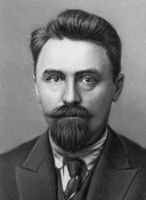Translation and analysis of words by ChatGPT artificial intelligence
On this page you can get a detailed analysis of a word or phrase, produced by the best artificial intelligence technology to date:
- how the word is used
- frequency of use
- it is used more often in oral or written speech
- word translation options
- usage examples (several phrases with translation)
- etymology
two-piece boom - translation to russian
строительное дело
стрела из двух шарнирно-сочленённых элементов
Definition

Wikipedia

The two-cent piece was produced by the Mint of the United States for circulation from 1864 to 1872 and for collectors in 1873. Designed by James B. Longacre, there were decreasing mintages each year, as other minor coins such as the nickel proved more popular. It was abolished by the Mint Act of 1873.
The economic turmoil of the American Civil War caused government-issued coins, even the non-silver Indian Head cent, to vanish from circulation, hoarded by the public. One means of filling this gap was private token issues, often made of bronze. The cent at that time was struck of a copper-nickel alloy, the same diameter as the later Lincoln cent, but somewhat thicker. The piece was difficult for the Philadelphia Mint to strike, and Mint officials, as well as the annual Assay Commission, recommended the coin's replacement. Despite opposition from those wishing to keep the metal nickel in the coinage, led by Pennsylvania Congressman Thaddeus Stevens, Congress passed the Coinage Act of 1864, authorizing bronze cents and two-cent pieces.
Although initially popular in the absence of other federal coinage, the two-cent piece's place in circulation was usurped by other base-metal coins which Congress subsequently authorized, the three-cent piece and the nickel. It was abolished in 1873; large quantities were redeemed by the government and melted. Nevertheless, two-cent pieces remain relatively inexpensive by the standards of 19th-century American coinage.


 (obv).jpg?width=200)
![Cent-sized [[Civil War token]], issued privately as all federal coinage was hoarded Cent-sized [[Civil War token]], issued privately as all federal coinage was hoarded](https://commons.wikimedia.org/wiki/Special:FilePath/Our little Monitor obverse.jpg?width=200)
![The new [[Shield nickel]] (first coined 1866) both resembled the two-cent piece and helped drive it from circulation. The new [[Shield nickel]] (first coined 1866) both resembled the two-cent piece and helped drive it from circulation.](https://commons.wikimedia.org/wiki/Special:FilePath/Shield nickel obverse by Howard Spindel.png?width=200)
